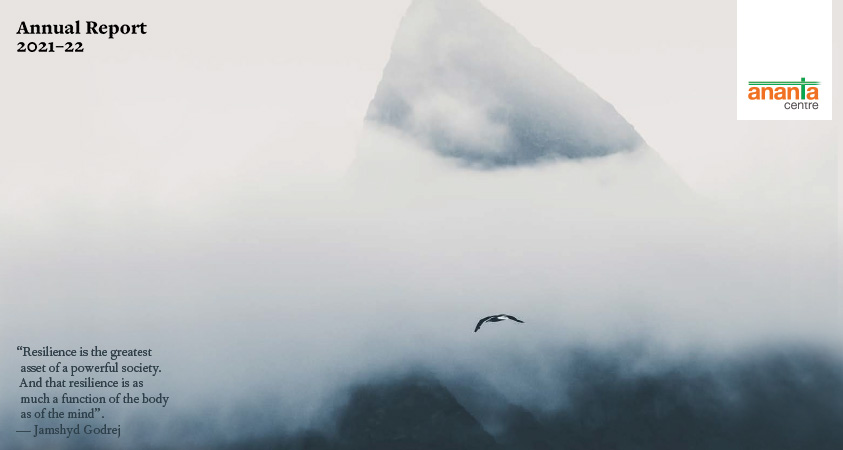H I G H L I G H T S
● Internal Issues in the EU
● EU-China
● India-EU
The European Union (EU) continues to bear a huge toll from the Russia-Ukraine conflict and show up in a diminished state, including in the abilities of its most important member-states, France, and Germany, to act independently or collectively ‘autonomous’ of the US. Multipolarity in global governance, to the extent provided by Europe as a distinct pole, has also taken a hit, raising the possibility of a US-China G2. The economic charge on the EU is, perhaps, best indicated in the fact that the Euro is now trading on par with the US Dollar – for years there had been a clear differential with the Euro pegged at a higher rate.
The “war”, which was not expected to last even a few weeks, has now gone on for over six months and no end appears in sight. Instead, prospects of a cold winter and inflation loom in Europe along with spectres of even nuclear holocausts. This was fuelled as the area near the largest nuclear power plant in Europe, Zaporizhzhia, in Ukraine, was under Russian attack forcing IAEA being brought in. Additional oxygen to such grist is suggestion by Russia that use of nuclear weapons in the conflict is not off the table. This all given possibilities of a conflict debacle for the Russians.
EU anger with the Russians has led them to largely suspend their visa (on arrival) arrangements with Russia and even block the adoption of communiques at the on-going G20 meetings in the run up to the Summit later this year in Indonesia. Indeed, the display of animosity towards Russia is such that even photo-ops and social events are being eschewed.
In the meantime, Europe faced a blistering summer earlier this year. Record temperatures were recorded along with receding water levels in major rivers such as the Rhine and talk of drought in certain parts of the continent. This stark reminder of climate change demands ways to cut back on fossil fuels but with Russian gas supplies in a certain jeopardy, EU commitment on reducing coal based thermal power production and moving towards renewables is under severe challenge.
Prior to the conflict, Russia supplied around 40% of EU’s gas needs. The EU claims that it is now down to under 10%. With the operationalization of Nord Stream 2 being halted in the wake of the conflict, the old Nord Stream 1 remains the main artery for Russian gas supplies. But, while the EU joined the US in making payments for Russian gas supplies harder by imposing financial sanctions, The Russians, too, have been playing hard ball, including by halting operations of Nord Stream 1. These are supposedly for carrying out repairs, though it is unclear whether these are deliberate stoppages of supply or a result of spares shortage due to western sanctions. Either way, they are hurting the EU and the world witnessing a spike in gas prices. The EU is working on cutting back its gas usage by as much as 15% with the Germans announcing cutbacks on heat and lighting in Government buildings to save 2% of their consumption. A huge package of Euros 65 billion has also been announced by the Germans to help their households with increased energy costs. Spain, Portugal and France, on their part, are also trying to source gas from Algeria.
In a continuing bid to stymie the Russians and prevent any windfall gains to them from sale of their oil, the Europeans joined the US and Canada in the G7 to announce a price cap on Russian oil starting December. While the objective may be to stymie the Russians in making windfall gains from oil sales while ensuring availability and keeping global prices in the range of USD 40-60 per barrel, India, China and many others have balked at joining this cap and its workability remains in question and may even result in an oil crunch for the EU, despite ramping up efforts on own production by the UK and Norway.
For decades the Europeans had worked to develop a relationship of mutual benefit with the Russians. But Ukraine, first through Russian action in Crimea in 2014, and now the present conflict, has belied these thoughts with many in the continent now going along a view, largely pushed by the US, that Russia, under President Putin or any other such authoritarian leadership, poses an existentialist threat to their way of life. No matter the present policy push being driven from across the Atlantic with the EU fairly diminished in its act, a fair amount of willingness at belt tightening and bearing the costs appears accepted in Europe. The author was recently in Germany and even heard several people say that they (Europeans) had enjoyed it too long but now had to face the crunch and both stand-by Ukraine as well as “humble” Russia. This willingness is there at-least till date though how the impact of a “cold” winter unfolds would needs to be seen.
Internal Issues in the EU
Internal With the domination of the conflict on the political and societal landscape, it was bound to have implications on the internal dynamics of the EU, which were, in any case frayed even before the conflict. A key stand-off is between the rightist Hungarian Prime Minister Viktor Orban and the EU leadership with the former “batting” for Russia, forcing gas and oil supplies from there to continue unabated to Hungary, even to allow the EU to reach consensus on action aimed at Russia. However, while EU “concerns” on Orban not following several of its regulations forced a Euro 7.5 billion cut in flows to Hungary, the EU has given it two months to implement reforms. For many, this segue reflects the reality in conflict worn out EU facing a diminished appetite within member-states for a fight on internal principles.
Elections have also been held in Italy and thrown up a right-wing coalition. While the leader, the likely first female PM of Italy, is supportive of Ukraine, many in the right-wing coalition are not willing to put Italians through economic hardships in a blind support for Ukraine and opposition to Russia. The over Euros 200 billion Covid economic recovery aid that is to flow to Italy should keep any the political leadership that emerges circumscribed in its approach to the EU, but the rocking of the EU boat by the third largest economy in the EU is not something that should be ruled out. Would Italy add to the heft of Hungary and Poland (along with the Czech Republic and Slovenia – the Visegrad group) in their disruptive actions within the EU needs to be seen but internal challenges for the EU are likely to mount especially with the Germans too now appearing to look more inward.
EU-China
Not really a chill but certainly a cooling has continued in EU-China ties. In this the European Parliament has been, as expected and usual, most vociferous, and even adopted a resolution castigating China over Taiwan. This continues the downward trend for China in the European Parliament after the Chinese sanctioned some MEPs following the EU’s sanctions against Chinese officials on account of human rights abuses. It has also continued to keep the EU-China investment agreement from end 2020 in the cold store.
EU-China trade ties, in Covid times, apart from the factors affecting the global economy in general, have taken a hit on account of the lack of international mobility disrupting supply chain following China’s adoption of overtly strong anti-Covid measures and strict lockdowns. European companies have been particularly impacted and have sought to have the matter raised at all levels but to no avail. For EU companies a new and additional risk factor is the increased politization of the economy in China and its global/regional assertiveness.
India-EU
India In May 2021 India and EU leaders had decided to relaunch the trade and investment agreement talks. This finally happened in June this year following a meeting of Commerce Minister Shri Piyush Goyal and the European Commission Executive Vice-President Valdis Dombrovskis. They also launched EU-India negotiations on an investment protection agreement and on an agreement on geographical indications. The objective is to fast-track the talks and conclude them by the end of 2023. Given the EU’s avowed commitments on sustainability, the agreements. As is the case in all EU trade agreements, the negotiations will also have to cover the EU’s insistence on ambitious and enforceable provisions on trade and sustainable development, and promotion of high environmental and labour standards.
The conclusion of agreements for a liberalised trade regime and on investment between India and the EU, in view of this author, are critical to giving a true upward momentum to India-EU ties. No matter its present tribulations, Europe’s abilities at resilience should not be taken as diminished and, in any case, its technological and financial prowess harnessed for growth of the economy in India. This is particularly relevant in the context of India’s ambitious green and sustainable agenda.
In the meantime, EU interest in India for climate action continued with the EU Commissioner for Energy visiting New Delhi and launching an India-EU initiative on green hydrogen with Power Minister Shri R K Singh. Interestingly, bot not unexpectedly, while much of the developing world’s interest in the forthcoming UNFCCC COP in Egypt (November) is on a global goal for adaptation, climate finance and the global stocktake, the EU’s focus, and this was underlined by the Commissioner in Delhi, is on energy transition and curbing the use of coal. EU’s push for a commitment on reduction in methane emissions, another problematic matter for India, also remains.
The previous issues of EUROGAZE are available here: LINK
………………………………………………………………………………………………
(The views expressed are personal)
………………………………………………………………………………………………























